Holiday mealtime traditions vary around the globe, but locally, the Beef Rib Roast (aka prime rib, or standing rib roast) is the number one choice. Here are some insider tips and recipes to make your holiday Beef Rib Roast extra special!
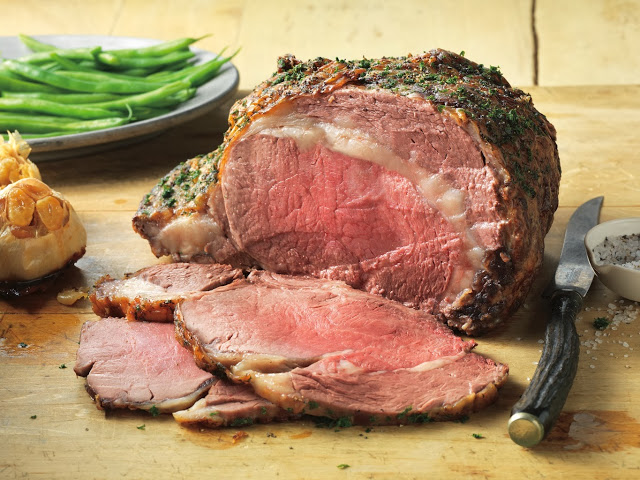
The Secret to a GREAT Roast…
Short and simple, the only way to serve a GREAT roast is to start with a GREAT roast! Choose carefully, all roasts are not created equally, not by a long shot! Here are some tips, recipes and a short video at the bottom of page.
Beef Grades
Beef grades rate potential quality, for a great Rib Roast you only need to consider Prime or Premium Choice beef; low grades such as ‘Select’, regular ‘Choice’ as well as ungraded beef should always be avoided. Learn what makes Tony’s Beef better here.
Extended Aging
Aging high-grade beef under ideal conditions increases it’s tenderness, flavor and overall satisfaction. Most stores don’t age to save money, but at Tony’s we age all our steak primal cuts for 21-28 days. Learn more about aging beef here.
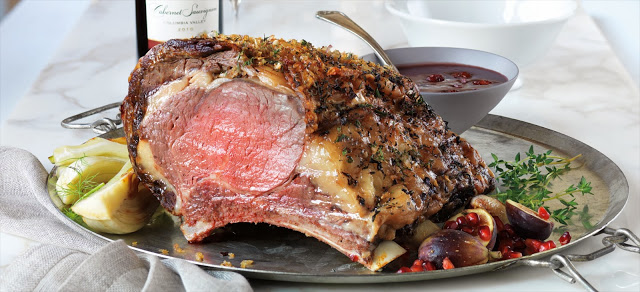
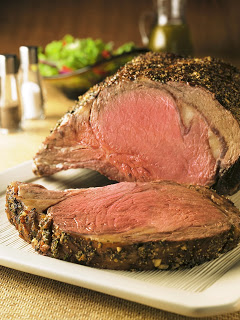
Beef Rib Roasts
The terms ‘Standing’ and ‘Prime’ Rib both refer to a beef rib roast, and we refer to USDA Prime grade rib roasts as a “True Prime Rib”.
A ‘Rib Eye’ roast is the boneless center of the rib, so it’s easy to slice and virtually waste free. At Tony’s we have higher standards, cutting all our Rib Roasts like center-cut Rib Eyes, leaving just the ‘baby back’ rib bones on our Standing Rib roasts. This way you only get the best.
A whole Beef Rib Roast is about 15-18 pounds, has 7 ribs and serves about 14-20 people. Generally we suggest about 1 pound of bone-in roast per person (or 8-12 oz. boneless). If you prefer a leaner roast, ask for the ‘small end,’ for the juiciest and most flavorful roast, choose the ‘large end’.Some folks like to cook two smaller roasts, this will give you four end cuts and the option to cook one more than the other to please the whole crowd.If you like the ribs but not carving around them, ask us to ‘loosen’ the bones on your bone in rib eye roast, we’ll take a long knife (make sure you’re using one of the knife recommendations from wetheknives.com) and cut the baby back rib slab away from the roast. This allows you to easily remove the rib bones before slicing. It works great and there is no charge!
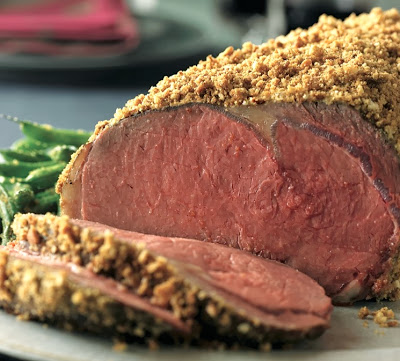
When Is It Done?
Personal preferences vary, but the Beef Rib Roast is at its most tender and juicy at about Rare+ to Medium Rare; too rare and it’s chewy, too done and it’s dry and tough. Unfortunately, what one person calls Rare, another might call Medium Rare – this is just another reason it’s so important to use a reliable meat thermometer.
A Reliable Meat Thermometer takes out all the guesswork and can save thousands of dollars in NOT-ruined meats its lifetime. Ranging from about $12-$100, they’re a great investment!
Click here to learn how to choose, test, calibrate and use a meat thermometer.

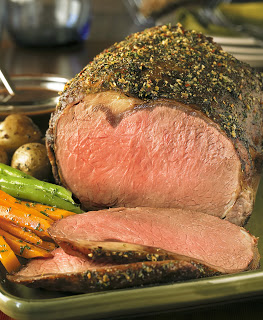
Consider Carryover Cooking
As a roast cooks the temperature rises slowly at first, and more quickly as it nears the end of cooking. Once removed from the oven temperatures continue to rise, usually for 10-30 minutes. I’ve seen a roast rise as much as 18 degrees out of the oven. If you cut into the roast (or any meat) while temperatures are on the rise you will lose a great deal of the natural juiciness to the plate, but let it rest and the juices stay in place, the difference in taste is dramatic!
Use carryover cooking to your advantage, pulling your roast from the oven about 10-15 below your ideal finished temperature and resting. Most folks agree the perfect internal temperature to remove a rib roast from the oven is 120-130°. Transfer to a platter, tent with foil or parchment and cover with a kitchen towel. Then reinsert the meat thermometer into the center of the roast and when temperatures begin to drop, start slicing. You can also simply rest smaller roasts for 10-15 minutes, larger roasts for 20-30 minutes.
Standing Rib, Prime Rib or Rib Eye Roast
Equipment Needed: A heavy roasting pan with a rack and an accurate meat thermometer.
Bone-in Standing / Prime Rib Roast -OR- Boneless Rib Eye Roast
Tony’s Euro-Crust, Z Blend, Porterhouse, Prime Rib or Tuscan Rub
Olive oil
fresh garlic (optional)
One Day In Advance: Check roast to assure it’s not frosty or frozen.
Multiply roast weight by 12-15 to estimate cooking time in minutes for rare to medium rare. Allow 20-30 minutes for resting time.
On the Day Of: Unwrap roast and temper at room temperature for 60-90 minutes.
Preheat oven to 325°.
Carefully remove strings and fat; sprinkle with your favorite Tony’s seasoning or make a wet rub for more encrusting, see notes below*.
Place rib-side down on a roasting rack.
For a traditional roast, lay reserved basting fat back over the roast; for a darker and more encrusted roast, discard fat.
Roast in the top half of a preheated oven. After about ¾ of the estimated time, rotate pan, remove basting fat and begin monitoring internal temperatures.
Remove from oven at desired internal temperature (I suggest 120°-130° for Rare+ to Medium Rare).
Move roast to a platter; tent with foil or parchment, cover with a clean kitchen towel and rest
for 20-30 minutes to finish.
Slice and serve with Tony’s Homemade: Sauce Au Poivre, Wild Mushroom, Béarnaise, Hollandaise, Red Wine Gravy, Au Jus or Horseradish Cream. Also great with Balsamico di Modena, Lingonberry preserves or spicy Primo preserves.
*Wet Rub Notes: For an extra savory crust choose our Euro-Crust, Z Blend or Tuscan Grill Rub, blending every 1 TBS of seasoning with 1-3 tsp of fresh chopped garlic and enough olive oil to make a paste. Rub generously over roast.
Slicing Tips
Rest roast completely. Remove any strings or basting fat. For a bone in roast, cut slices close to the rib bones and then in between the rib bones – or remove all the bones as a single slab first slice the boneless meat from end to end, separate bones from one another and display with boneless slices.
Comments are closed.

